SEO Forecasting: The Ultimate Guide
If there’s a singular truth about the SEO industry, it’s that SEO folks always have to stay out in front of their competitors to deliver the best results possible.
And what better way to stay one step ahead than to forecast the SEO results your current strategy can help you achieve?
SEO forecasting can provide multiple benefits both for in-house SEOs and for those working in an agency setting. For example, it can help you set realistic expectations of what results in terms of rankings, traffic, or conversions you can achieve, communicate your strategies and budgets clearly with your management and clients, and identify areas of improvement.
So, let’s get started with understanding all that’s required to know about SEO forecasting!
Download our research findings and get an idea of how AIOs are going to change the search!
Click the confirmation link we sent to your you email
What is SEO forecasting?
SEO forecasting is simply a process that helps you predict your future website traffic, search engine visibility, or other SEO-related metrics through SEO efforts.
You can use multiple data sources and metrics, such as keyword search volume, search engine results page (SERP) ranking, and current traffic to determine results. In this article, we will cover the most common methods of SEO forecasting, ones you can use in a way that works best for you and your team.
Why is SEO forecasting important?
SEO forecasting is important because it is a data-backed methodology that helps you get a realistic outlook on how to project the search ranking of a website so you know how and where to invest your current budget and resources.
Imagine if you blindly invested all your money behind SEO for one particular keyword cluster, only to realize that it doesn’t provide any return on investment (ROI) — that would be a major dump of resources, wouldn’t it?
Aside from just providing you with a handle on your budget, SEO forecasts also help you create realistic expectations in front of your management or clients. After all, we don’t want to create a situation where we tell our clients that we can get their website on the first page of SERP, only for that not to happen!
Can you accurately forecast SEO growth?
Simply put, no. This is mainly because — although SEO forecasts rely on multiple metrics — the data they’re looking at are historic. And there’s no telling where and when there can be a shift in trends or updates in algorithms.
For example, a while back, NFTs were all the rage, so it made sense to cover NFT-related keywords more. But now we hardly hear about them anymore, so if we relied on previous data for organic search forecasting of that keyword, we might not get accurate results.
When should you not use SEO forecasting?
Let’s look at the downsides of doing SEO forecasting (there are very few, btw!).
One of the times when you should not be doing SEO forecasting is if you’re dealing with a very tricky client who wants guaranteed results instead of estimates. In that case, SEO forecasting may not be a good idea because it can only provide estimates.
And these estimates, although data-backed, are sometimes not reliable for the trends and rapidly rising industries because they cannot guarantee what the audience’s interest, user behavior, or search intent may be in the future.
The forecasts may also be unreliable when a new technology (like ChatGPT or Search Generative Experience) comes to town and disrupts the industry.
First-party vs. third-party: Which data should you account for in SEO forecasting?
When it comes to SEO forecasting, the two main types of data to account for are first-party data and third-party data. First-party data looks into your own results; for example, your current clicks from Google’s organic results, conversion rate, click-through rate (CTR), average order value, seasonality, etc.
To access such insights, you will probably use Google Search Console and Google Analytics, your CRM data as well as your trusted third-party SEO tool.
Third-party data, on the other hand, provides data on your competitors, such as which keywords they rank for with their search volume, how much traffic they get through organic channels and what are the URLs that get this traffic, number of backlinks they have, etc.
Such data is available on software like SE Ranking, where you can just paste the URL of your competitor in our Competitor Analysis Tool, and all their information will pop up.
Experts usually suggest getting your hands on both first and third party data to get broader insights into your SEO forecasts.
What should be done before SEO traffic forecasting to improve accuracy?
- Analyze metrics for SEO forecasting
The most important aspect in obtaining accurate results is to know which metrics are necessary and which aren’t. Your SEO forecast will be incomplete if you don’t have access to critical data like keyword search volume.
On the flip side of this coin, other metrics like clients, average order price, etc., are all directly related to business forecasting but can have little impact when trying to conduct an SEO forecast.
Another thing to consider is your data type and source.
For example, if you’re conducting SEO forecasts to predict your organic traffic based on competitor’s current traffic and how it’s trending, you will have to use third-party data, but if you’re doing it to understand how to utilize your budget based on your previous spend vs the results you achieved, you’ll have to use first-party data.
- Determine your goals for SEO forecasting
Another important component of SEO forecasting is to identify your goals for conducting the forecast in the first place.
Ask yourself if you are doing this to get a better idea of how to utilize your budget, prioritize your work, or to get an understanding of the potential outcome of a particular keyword or keyword cluster.
How do you forecast SEO growth?
While most folks rely on keyword traffic estimation to conduct SEO forecasting, there are other methods you can rely on as well to get effective results.
Before we begin to touch upon all the methodologies, it’s worth noting there’s a huge difference between forecasting for a completely new project (for example, when you need to decide whether it makes sense to build and optimize a new website in a particular niche), versus predictive strategies for an existing project.
The former will have no historical data you can base your forecasts on, but the latter will be equipped with multiple data sources and metrics you can use for a more accurate forecast.
1. Keyword forecasting
Let’s start with the most popular method on the list — estimating traffic based on keyword search volume and CTR. With this method, you summarize the search volume of all your target keywords and multiply it by the average CTR for the positions you aim for. The formula is:
Estimated monthly traffic = Total keyword search volume * Average CTR
A more precise forecast would require you to calculate estimated traffic for every page since you probably have different ranking goals for different pages. Then, you’ll need to summarize traffic estimates for each page.
Here are the detailed steps you need to follow to estimate website traffic based on keyword data:
Step 1: Pull search volume and rankings data for your target keywords
First, identify all the keywords your website already ranks for and the keywords you would like to rank for. Gather data on their search volumes and your current SERP rankings.
Tools that will help you pull all the data include:
- Google Search Console and Google Analytics
- SE Ranking’s Keyword and Competitive Research tool, Keyword Rank Tracker.
Identify all the keywords your site ranks for
To get a list of all keywords your site ranks for from Google Search Console, go to Performance → Search Results → Queries. You can also sync your Google Search Console with Google Analytics to see your site keywords under Queries in the Search Console section.
Another option is to use third-party tools such as SE Ranking’s Competitive Research. They are especially helpful for making traffic estimations for new projects with no historical data — in this case, you can analyze your competitors’ sites. Tools like Competitive Research can also be useful in case your client hasn’t granted you access to their GSC and GA.
You may find detailed instructions in this complete guide on finding the keyword a site rank for.
Add your target keywords to the list
SEO forecasting implies taking into account both keywords you already rank for and keywords you aim to rank for. If your goal is to get traction for those keywords within the forecasted period, add them to the list.
Get keyword search volume and ranking data
GSC offers no search volume data, so you’ll need to rely on third-party tools such as SE Ranking’s Keyword Research tool. The tool applies AI algorithms for ungrouping keyword search volumes of similar keywords and factors in seasonality to provide the most accurate search volume date.
With Keyword Research tool, you can check the search volume of all your target keywords in bulk in a few clicks.
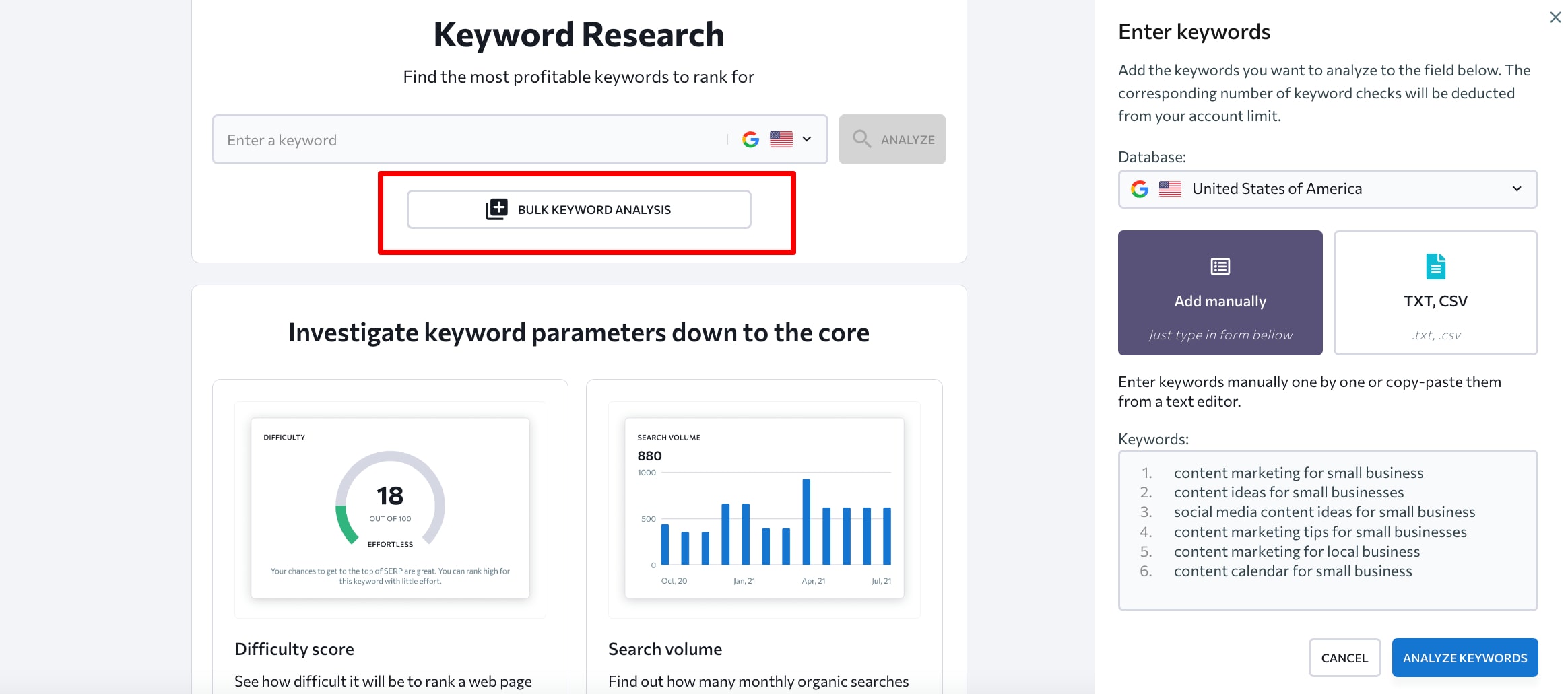
To add your current rankings to the picture, you can use GSC data. Keep in mind, though, that it only features average position data with stats being updated within 24-48 hours after collection.
Dedicated tools like SE Ranking’s Keyword Rank Tracker offer more precise data, which is updated daily. The tool also allows you to group your keywords by clusters and view rankings data per URL.
You can immediately get the total search volume and average positions for each group of keywords and quickly calculate the estimated traffic per URL.
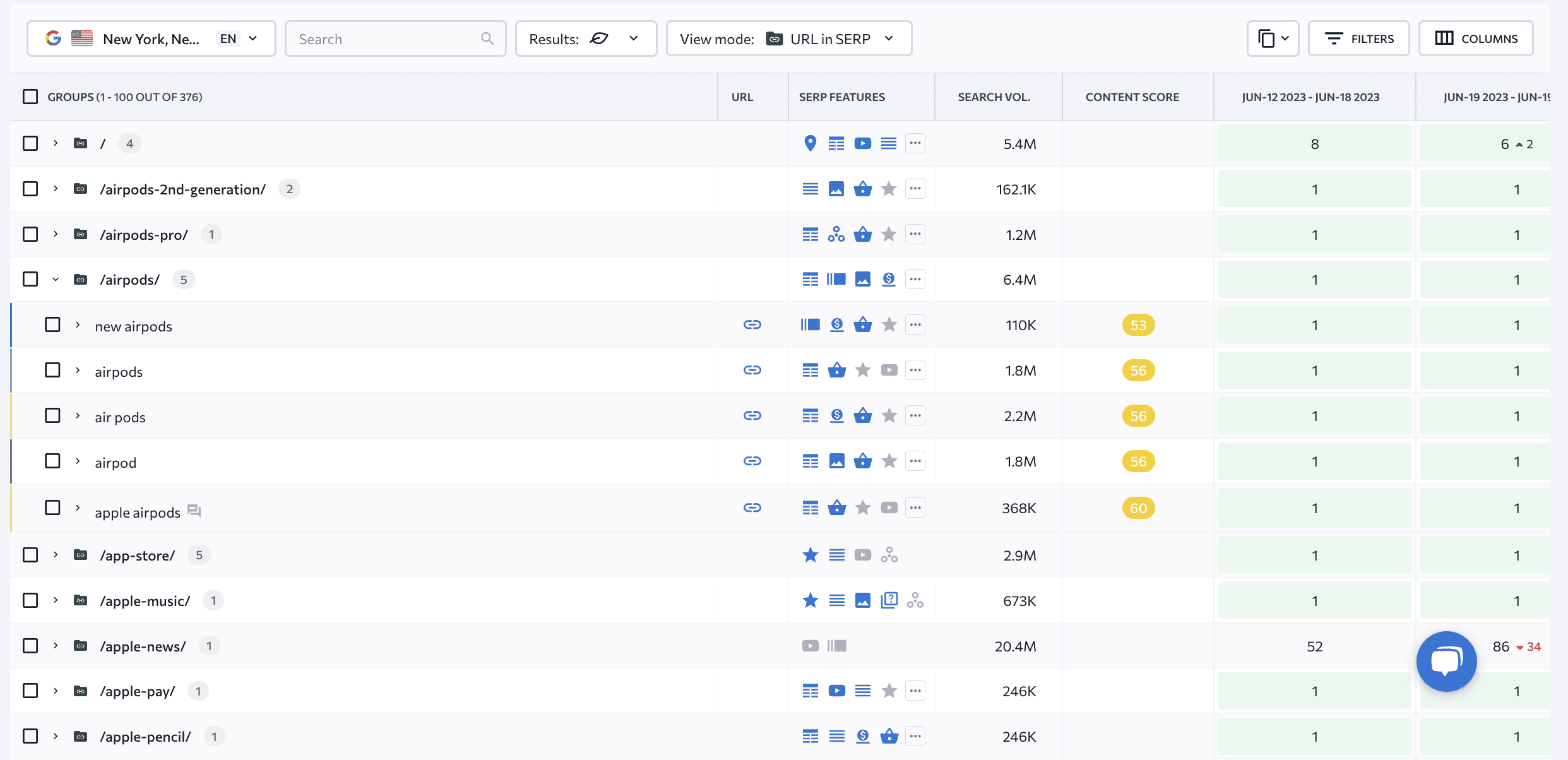
Step 2: Estimate traffic based on average CTR
Next up is to estimate traffic based on average click-through rates, as this will help you understand and forecast traffic. You can get this data on Advanced Web Rankings Organic CTR History. You can also use Google Analytics Acquisition reports if you wish to find out the CTR of your own search rankings.
To recap, the formula is as follows:
Estimated monthly traffic = total keyword search volume * average CTR
Let’s say one of your target pages has a total keyword search volume of 8k and its current average position is 12, but you hope to make it rank number eight on average.
Your page has commercial search intent, and according to your historical data, the expected CTR for position eight is 1%.
Therefore, your estimated monthly traffic is 8k*1% = 80 website visitors.
Many SEOs would stop here, but you can take your forecast a few steps further and calculate how your traffic then translates into leads, sales, and revenue. This would help you better understand the ROI of each keyword.
Step 3: Estimate leads based on the average conversion rate
Once you’ve found your CTR, you now need to identify how many of those who clicked on the page are actually turning into leads. Doing so will help you forecast SEO potential, understand the value of your traffic, estimate future profits, and will also help you investigate areas of improvement.
It’s not all based on guesstimates, though. You can estimate leads using the formula:
Estimated leads = estimated organic search traffic * average conversion rate
In the previous section, we discussed how to calculate estimated traffic, so now that we already know what the estimated organic search traffic is for a webpage, you can find out the conversion rate by using the formula:
Conversion rate = Conversion/Website visitors * 100
Let’s calculate estimated leads for the hypothetical page we discussed in the previous section. Imagine if achieved your goal of ranking it #8 on the SERP. The page’s keyword search volume, as we calculated earlier is 80, and through your own data, you figure out your conversion rate is 5%. You’ll just need to multiply 80 by 5% to find out the estimated leads you could receive (this gives us the calculation of 4 estimated leads).
Step 4: Estimate sales based on average sales data
One of the final steps in the keyword forecasting process is to find out if the leads are turning into paying customers. To do that, you’ll need to find out the estimated sales you made (or your customer-to-lead ratio).
The formula for this calculation is:
Estimated sales = Estimated number of leads * (Conversion rate/100)
So, using the same data as above, we get 40 * (5/100), which brings our total to 2.
Just to note, the number of search traffic you see for a specific keyword would be much different (and typically higher) in the real world.
Step 5: Find revenue you can obtain from the sale
Next up, you’ll need to find out how much you can earn from this sale. So, to calculate this, you’ll first need to take the price of your product into consideration and predict the quantities a typical customer might buy. You can use historical data to understand the average quantities a customer purchases.
Imagine your product costs $500 apiece, and you sell three to each customer, plus you factor in the possibility of an upsell, which would cost an additional one-time $100. You end up generating revenue of $1600 per customer using the following formula:
Revenue per customer = Sale price * Quantity + Additional revenue factors
At this stage, instead of just considering the customer as a one-time client, you can also consider their lifetime value (LTV).
For example, if you sell a SaaS product like a subscription, a typical customer may stay on as long as two years paying you monthly. However, if you sell a high-ticket product, like heavy machinery, you might not have constant, repeat customers (especially for the same product).
From our previous sections, we understood that we had two sales [40 * (5/100) = 2], so it’s time to multiply each sale by the revenue you end up making. So, 2 x 1600 = $3200. If this is your monthly revenue, you can also identify your yearly revenue by multiplying it by 12, so here, our annual revenue would be $38,400.
Step 6: Evaluate the impact of each group of keywords
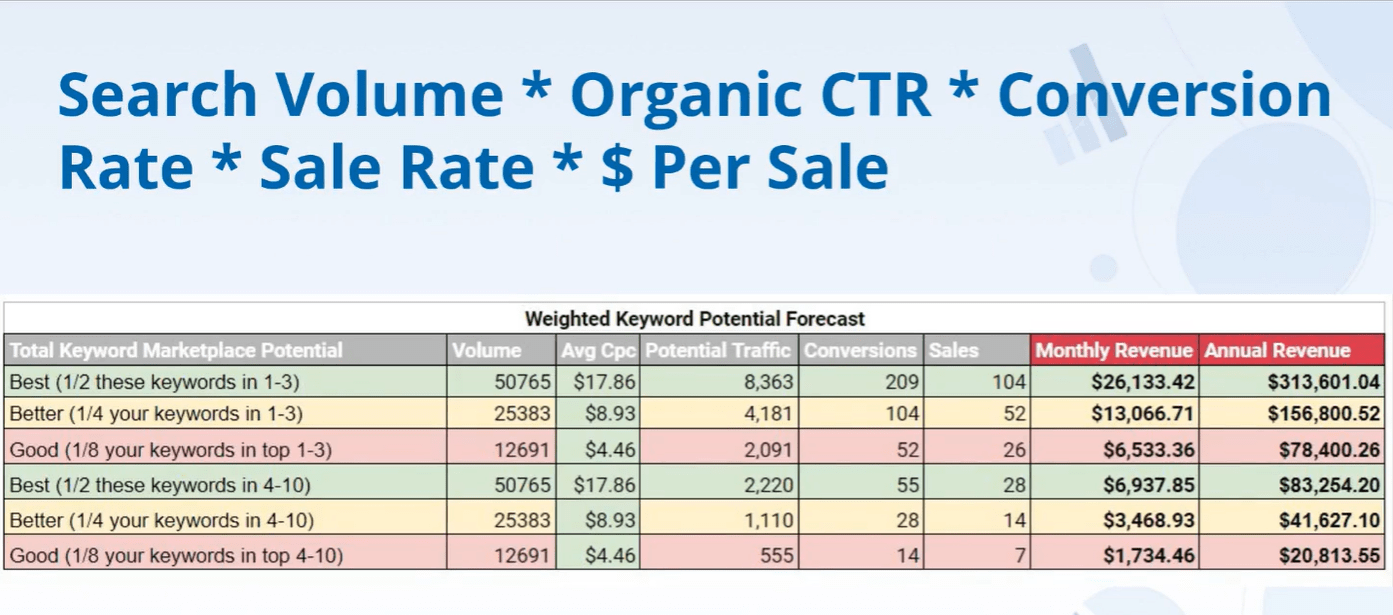
Once you have all this data on hand, all you need to do is evaluate how profitable these keywords are for you, the traffic they bring, if it makes sense to invest in them, and how to aim for a realistic increase in SERP rankings. For example, if your website ranks at position #5 on the SERP, you’ll want to aim for the second or third position in the climb toward number one.
A keyword forecasting method, which factors in the revenue each group of keywords ultimately brings, is useful if you wish to analyze the overall ROI of a keyword. It will not only tell you the number of people who have visited your website (or will visit your website), but it can also help you understand if the traffic converted into leads and sales.
2. Statistical forecasting
The statistical forecasting relies on historical traffic data and often applies mathematical formulas to calculate seasonality and YoY growth. Then, more formulas are applied to predict future traffic based on the input data.
To do statistical SEO forecasting, use Excel spreadsheets. You can use Google’s Search Console to get access to historical data, outliers, and seasonality.
Once you have all this information on hand, you should:
- Import your Search Console or Google Analytics traffic data onto Excel.
For example, this is what your data may look like on an Excel spreadsheet (we’ve used Search Engine Land template for inspiration here):
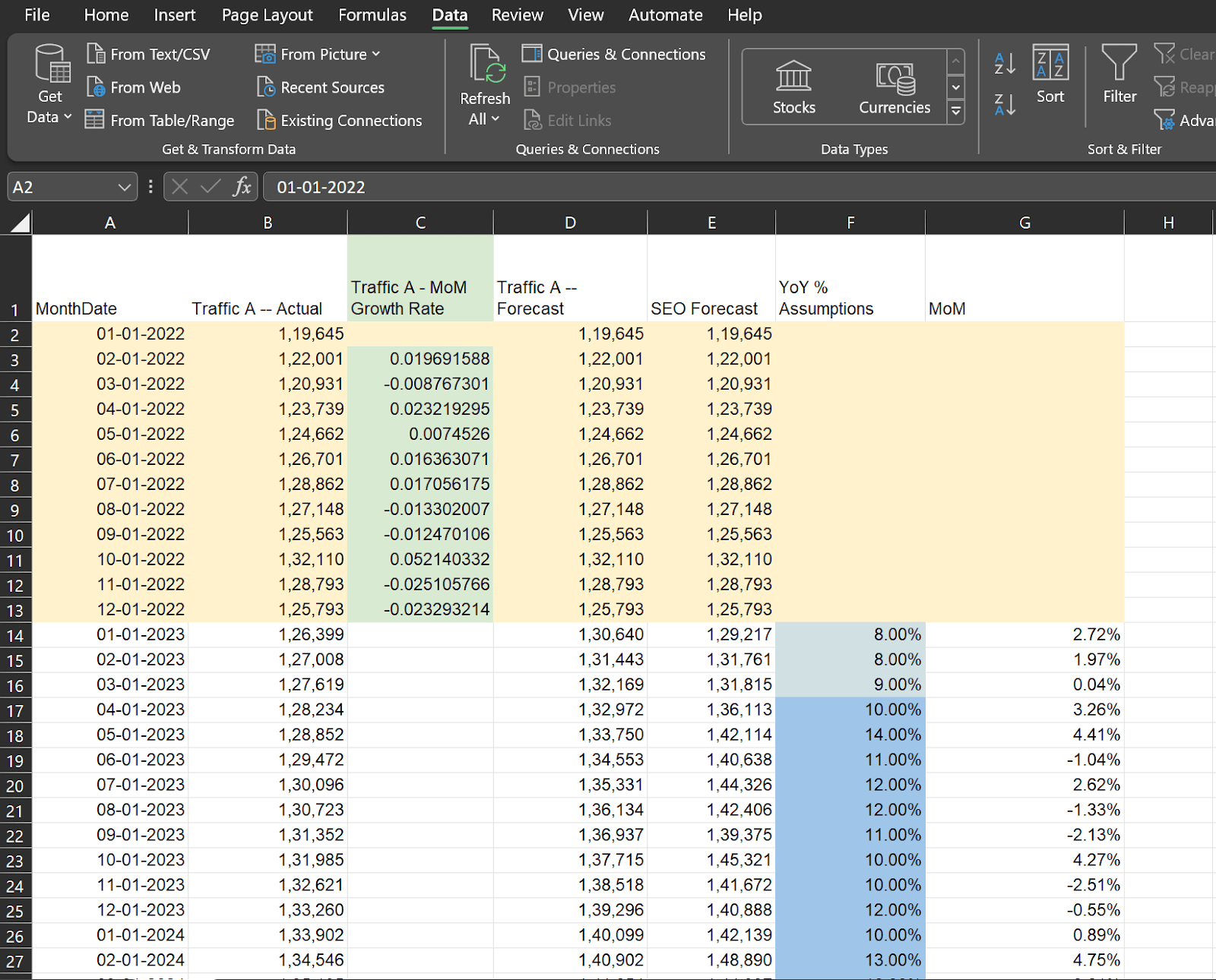
Note: You can also use the ready-made SEO forecast templates created by Moz, Kevin Indig, or Tuff Growth, where you can manually input data, and the pre-arranged formulas will help you come up with accurate results. The last template combines keyword and statistical forecasting models.
- To create a forecast, go to Data and use the Data Analysis function (if you don’t already have this function on Excel, you can download the Analysis ToolPak). Alternatively, you can also use the Forecast Sheet option under data.
For example, once you select the data range and select the Forecast Sheet option, this is what your forecast will look like:
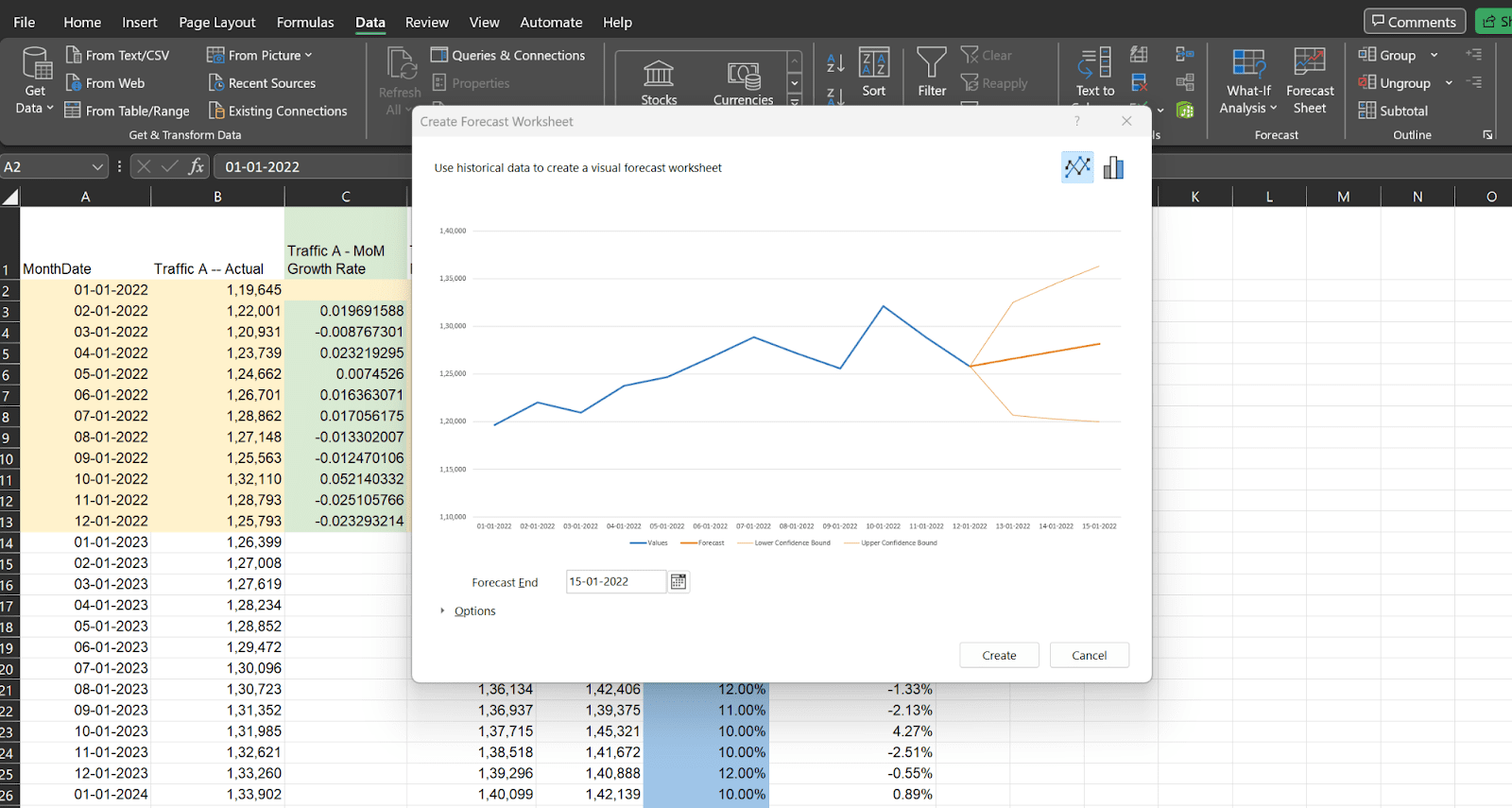
We’re using the linear regression method here, but you can also use the bar diagram. Additionally, you can also set the timeline ranges, forecast start and end dates, and confidence intervals by clicking on “Options.”
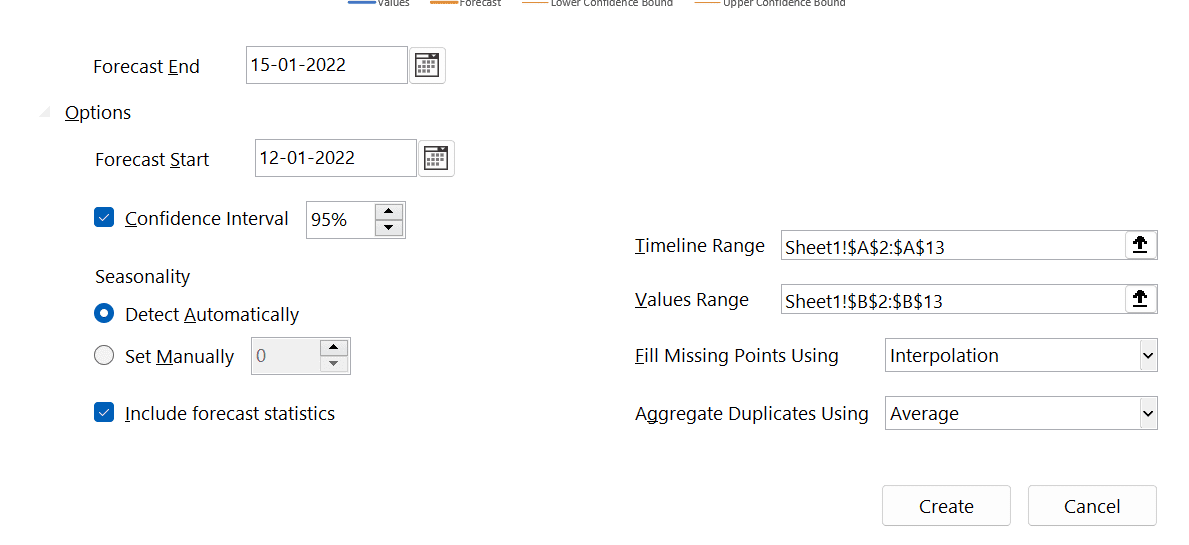
If you’re using the Data Analysis function, find SEO forecast results simply by clicking on what type of statistical methods you want to use (listed methodologies would be linear regression, trendline, exponential smoothing, moving averages, histograms, etc.)
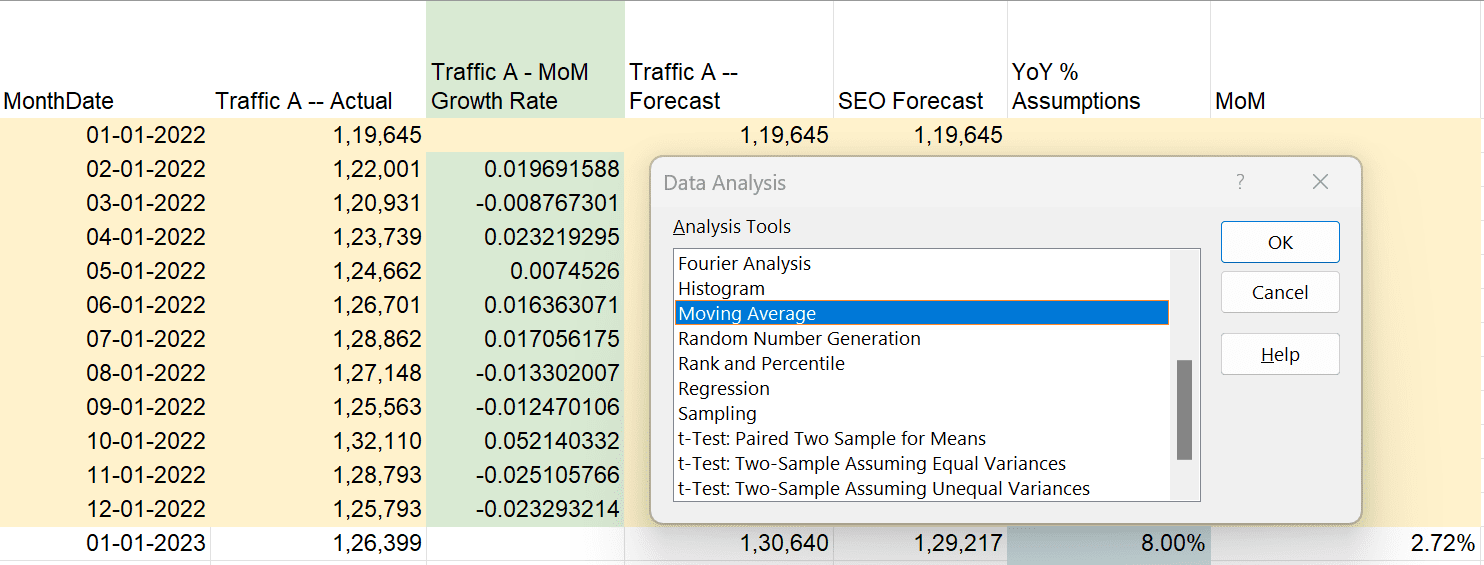
For example, considering you use the Moving Averages methodology here, you’ll get this result:

However, feel free to analyze traffic visually as you best see fit. Most experts choose to use linear regression and exponential smoothing methodologies to find accurate results.
Pro Tip: You can also use formulas in Excel for statistical analysis, which are also available in Google Sheets. For example, the formula for linear regression is “=FORECAST(x,known_y’s, known_x’s).”
The statistical forecast method is especially useful if you’re someone who likes to visualize data from multiple different angles instead of reading data points and making guesstimates (plus, this is a relatively easy and free method to consider!). However, it might take some time to input all the data manually.
3. Use SEO forecasting tools
Using SEO forecasting tools is another possibility you can consider implementing to achieve results, as they will also use multiple data sources and metrics to analyze trends and predict future website traffic (plus there are plenty of options available online for you to pick and choose!).
SE Ranking has an SEO potential tool that you can use to your advantage if you wish to understand how many users will possibly visit your website, what the traffic value would be, how much income you could earn from them, and the estimated number of clients you’ll get if your keyword reaches the top rankings on SERP.
To make traffic forecasts, the tool relies on the total search volume value of all the keywords added to your SE Ranking project. Then, you can indicate which top positions you’re trying to achieve (e.g., bring all your target keywords to the top 10), and the tool will give you an estimate of the traffic you can get provided that you achieve your goal.

Additionally, if you set up Conversion into sales ratio along with the Average revenue per customer value, the tool will also calculate the number of clients you can acquire within a month, and your estimated income from doing so.

Do more with SE Ranking
When it comes to SEO, SE Ranking is not a tool; it’s a partner.
We have a 360-degree solution that helps agencies, freelancers, and businesses alike to grow their website traffic.
For example, we have helped clients like Crux go from the 5th page on the SERP to the first page with more than 20,000 organic visitors, and did so within six months.
So, if you wish to know how we can help you, too, we invite you to use our 14-day free trial to get access to rich SEO insights.

